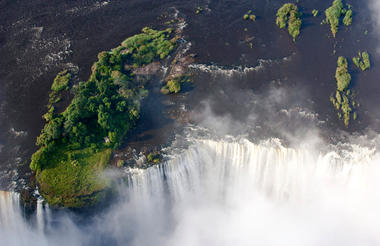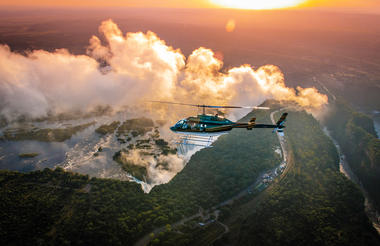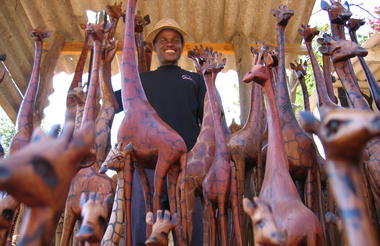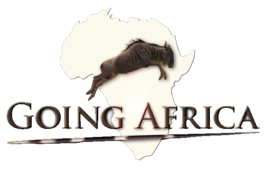Visa
Some visitors need to apply for visas before arrival please check with your Embassy.
For more information on visas please visit the following address:
Botswana Government - Visa Requirements
BORDER CROSSINGS
Currency
The currency of Botswana is the Pula (BWP). US$ Dollar notes (2007 Series onwards), and Visa and MasterCard are accepted.
Internal Flights and Transfers
Due to the remote areas the camps and lodges are based in, transfers between camps may take place by boat, mokoro, game drive vehicle or light aircraft.
Flight times around Botswana | Approximate flying times
Flight duration times (as listed below), are to be used as an average guideline. They are based on actual flying time, and passengers may have various stops en-route to a destination affecting the total travel time. Your pilot will brief you of your flight route and duration during the safety briefing.
Maun - Delta: 15 to 30 minutes
Delta – Delta: 10 to 20 minutes
Delta - Linyanti: 30 to 40 minutes
Maun – Linyanti: 50 to 60 minutes
Linyanti - Kasane: 40 to 60 minutes
Maun/Delta - Kasane: 60 to 80 minutes
Maun - Makgadikgadi/Desert: 40 to 60 minutes
Departure Taxes
Departure taxes are included in ticket prices.
Weight & Luggage Restrictions
See Booking Information
The Okavango Delta is where the wild things are: an immense, waterlogged oasis alive with elephants and birdlife, adrift in the middle of Kalahari sands. The real magic of the Delta lies in its water, trickling through from far away highlands, and spreading across the channels and floodplains.
During winter in the Kalahari, when the sun has baked the earth bare and turned the desert its driest, water fills the Okavango; transforming the floodplains into a Noah’s Ark of African wildlife.
As the water brings life to the delta, its local residents shape and recreate it. Termites slowly build mounds into islands, germinated with palm trees by passing elephants. Waterways open and close on the whim of wide-bottomed hippos, carving out channels where they crash through reeds, and leaving room behind them for exploration by mokoro.
The Okavango has many faces, which change throughout the year, prompted by that most unpredictable diva of all: the weather. Water levels rise and drop, expanding and shrinking islands, while animals move where the life is easiest and the grass greenest. In a few days, a sandy road driven by vehicle can become a waterway of unknowable depth, prompting a safari by boat instead.
Where and when you stay in the Okavango Delta will hugely influence what you do in the bush each day, the animals you’re most likely to see and finally, the safari experience you’ll have.
The delta’s watery heart is best discovered by mokoro through shallow channels and floodplains, as well as crossing the islands on foot. For less water and more of the big game, visit a camp on its drier edges (including Moremi Game Reserve and the Khwai Community Area), jump on a vehicle and seek out the animals hiding in the woodlands.
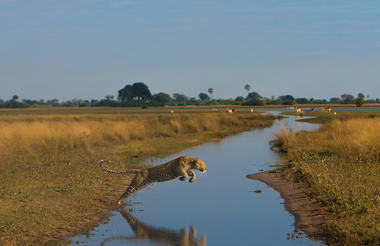
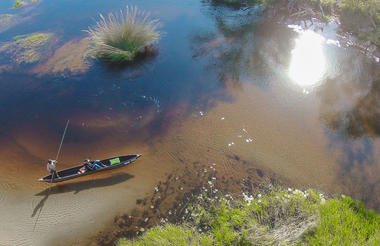
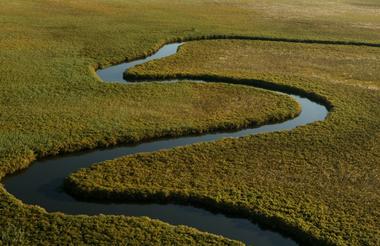
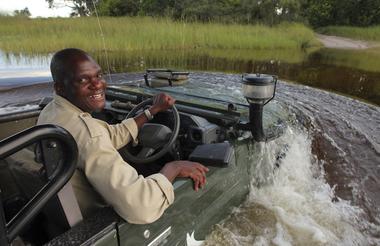
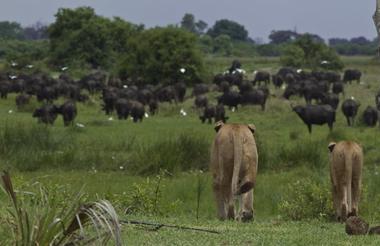
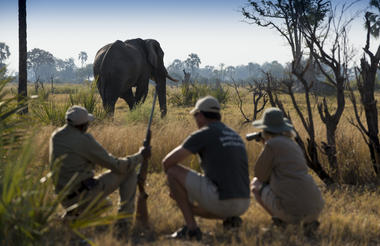
Looking at a map of Botswana, you’d miss Khwai completely if you didn’t know it was there. Wedged between the big-ticket attractions of Chobe National Park to the east and Moremi Game Reserve to the south, Khwai exists as a significant big game destination of its own.
Lying on the eastern fringes of the Okavango Delta with a rich wildlife population and no borders drawn around it on the map, Khwai is often overlooked in favour of its more famous neighbours, though in the winter months it can hold its own for the quality of big game viewing.
During your time here, you’ll spend most days exploring the narrow Khwai River, which forms the natural boundary to the Moremi Game Reserve on the south. The Khwai River is a beacon for wildlife and plays host to leopards stalking lechwe in the long grass, lions swimming from the banks to save their cubs’ during territorial disputes and crocodiles competing with wild dogs for a midday meal of impala.
As Khwai lies outside the parks, it offers the freedom and flexibility normally only possible with the heavier price tag of a private concession. Go off-road for a closer look at sightings, night drive in search of nocturnal species, and, with a little advance planning, head out on game walks to track wildlife on foot.
Khwai is also home to a village community where people live side by side with the resident wildlife. Some camps will offer village visits for a dose of cultural insight to go with your safari. For those not visiting the water camps of the delta, many camps in Khwai offer the chance to get out on a mokoro (traditional canoe), although excursions are less traditional in nature, skirting the riverbanks, rather than open delta floodplains.
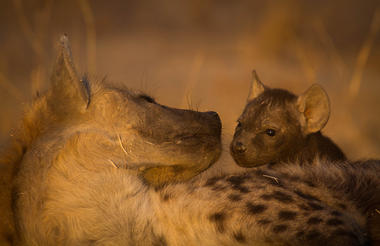
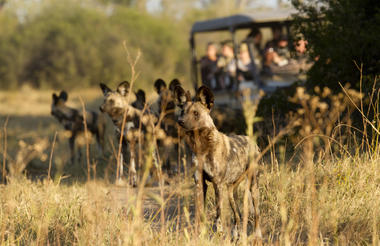
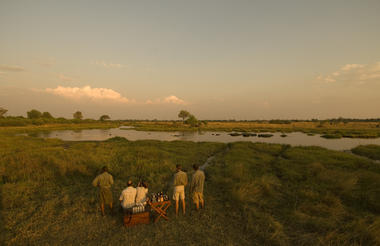
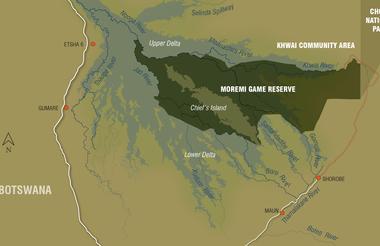
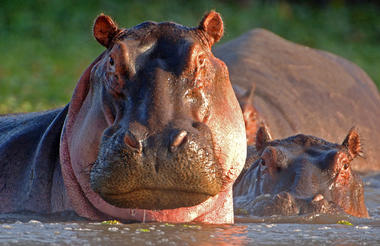
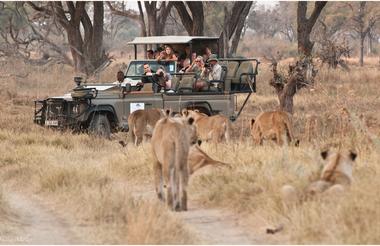
When it comes to Botswana, Savute breaks all the rules: both for animal behaviour and for habitats. Here, lions hunt elephants, leopards take to fishing, the grasslands are vast and open and rocky hills punctuate the flat terrain.
Savute has proved itself somewhat of an enigma over the decades. During years of abundance its marsh fills with water, fed by the Savute Channel. The water weaves its way here from Angola via a chain of rivers and lagoons, spilling out into the marsh and drawing huge herds of elephants, wildebeest, zebras and buffalos.
In drier years, the channel shrinks into small pools and can evaporate completely, leaving the marsh dry and sending wildlife to the waterholes for water, where the tension between plains game and predators heats up over a parched and dusty landscape.
Wherever the plains game goes in Savute, the predators follow close-by, learning tricks of survival to adapt to the marsh’s ever changing nature. Whether the water flows here or not is anyone’s guess. The channel and marsh have a life of their own, independent both of the seasons and the annual rainfall.
Savute doesn’t just offer a safari; it’s also a feast for the eyes. Whitewashed skeletal trees set against green grass and huge blue skies, blinding red sunsets that spill purple and orange across the bush, and endless horizons that fade into a hazy mirage with the heat.
As Savute is part of Chobe National Park, a safari here is limited to game drives only. With the diversity of habitats, wildlife and landscapes that the marsh has to offer however, you’ll still find yourself wishing you had more time to see it all.

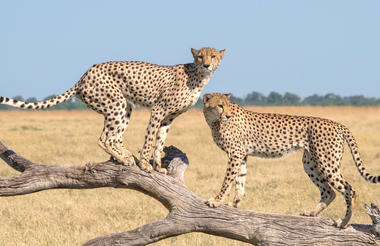
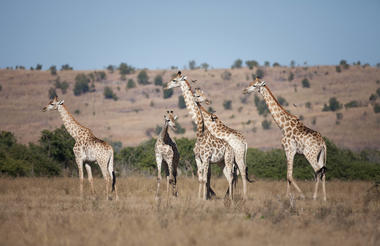



Tucked away in the northeastern corner of Botswana, on the banks of the famous Chobe River, the quaint little town of Kasane rests on the doorstep of the spectacular Chobe National Park . There are no boundary fences separating the village from the park and game such as elephant and warthog are often spotted roaming around the town and hippos at times come onto land to help themselves to the lush grass of manicured lawns. Wildlife such as the elusive wild dog have been seen along the tar roads on the outskirts of town. Within Kasane behind the police station, an ancient baobab tree stands on display, once serving as a local prison. Visitors can look forward to a multitude of activities including game drives through the park, taking a sunset cruise down the Chobe River, visiting a local village or jumping on a day trip to the breathtaking Victoria Falls. Kasane is strategically located close to the Namibian, Zambian and Zimbabwean borders.
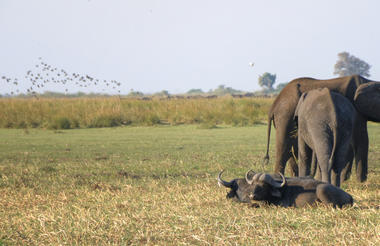



Currency
From June 2019 the Zimbabwean Dollar (Z$) was reinstated as the official currency of Zimbabwe. However, for tourism purposes, cash in US Dollars is generally the accepted currency. US$ Dollar notes (2007 Series onwards), and Visa and MasterCard are accepted. Always have enough US$ cash available in smaller denominations in the event where ATM's and Credit Card facilities are not operational.
Visa
Fees for Visitors to Zimbabwe who are eligible to receive their visa on entry
Europe and USA: US$ 30.00 for single entry/ US$ 45.00 for double entry.
UK & Ireland: US$ 55.00 for single entry/ US$ 70.00 for double entry.
Canada: US$ 75.00 for single entry/ double entry to be obtained from local embassy prior to travel
Some visitors need to apply for visas before arrival - please check with your Embassy, Zimbabwe Government Visa Requirements. ALWAYS have cash available in the correct US$ amount at ALL ports of entry.
Kaza Univisa – Zimbabwe and Zambia
Travellers planning to visit both Zimbabwe and Zambia should apply for a UniVisa (also known as KAZA visa). The visa can be obtained in advance, as well as at ports of entry, but cannot be guaranteed.
The UniVisa allows travellers 30 days travel within both Zambia and Zimbabwe, and is also valid for daytrips to Botswana. Travellers must remain within Zambia & Zimbabwe for the visa to stay valid. Visiting Botswana as a daytrip will not affect the visa’s validity, provided travellers return to Zambia or Zimbabwe the same day.
Internal Flights and Transfers
Due to the remote areas the camps and lodges are based in, transfers between camps may take place by boat, train, game drive vehicle or light aircraft.
Road transfers to and from Hwange Safari Lodge/ Hwange Main Camp have scheduled departure times, any transfer outside these times will attract a surcharge.
Departure Taxes
International departure taxes are included in the scheduled flight rates. However light aircraft transfers from Victoria Falls Airport to Livingstone or Kasane require an International Departure tax of US$35 per person & AIDF Levy of US$15 = US$50 per person to be paid in cash.
Domestic departure taxes are payable in cash at the airport, for any flights departing internally from any registered, manned airport. These include Harare, Bulawayo, Kariba, Hwange and Victoria Falls Airport. The amount is US$10 departure tax + US$5 AIDF Levy = US$15 per person. We recommend small denominations for easier and quicker transactions as change is not always available. Traveller’s cheques and credit cards are NOT accepted.
Weight & Luggage Restrictions
See Booking Information
At Victoria Falls, the earth splits open and swallows one of Africa’s greatest rivers, the mighty Zambezi, creating the largest sheet of falling water on earth. As the water hits the narrow depths of the Batoka Gorge beneath, it blasts a cloud of mist skywards, lending the falls their local name ‘mosi-oa-tunya’ (the smoke that thunders). When the Zambezi is its fullest, the mist hangs a permanent raincloud above the falls, showering visitors on even the sunniest of days and visible for miles around.
Above the falls on the upper Zambezi, boats cruise the tranquil water at sunset while the distant spray catches the fading light downstream. Below the falls, the Batoka Gorge’s rocky walls funnel the lower Zambezi into a chain of world-class rapids, prime for white water rafting.
Aside from being a UNESCO world heritage site and a natural world wonder, Victoria Falls also forms a natural border between Zimbabwe and Zambia. The falls can be seen from both countries, and for the most part the same activities are offered on both sides, from helicopter scenic flights to village visits and souvenir shopping.
Whether your idea of getting away from it all is a relaxed high tea in colonial grandeur or a heart-stopping bungee jump off a bridge, Victoria Falls keeps both the faint of heart and the most insatiable of adrenalin junkies busy for days.
From Zambia, a side on view of the falls is on offer with views into the Batoka Gorge, as well as the possibility of perching yourself at the edge of the falls on the vertigo-inducing Livingstone Island.
From Zimbabwe, you’ll get a full-frontal view of three quarters of the falls’ 1.7km wide curtain of water from viewpoints and footpaths meandering through a rainforest kept hot and humid by the spray of the falls.
